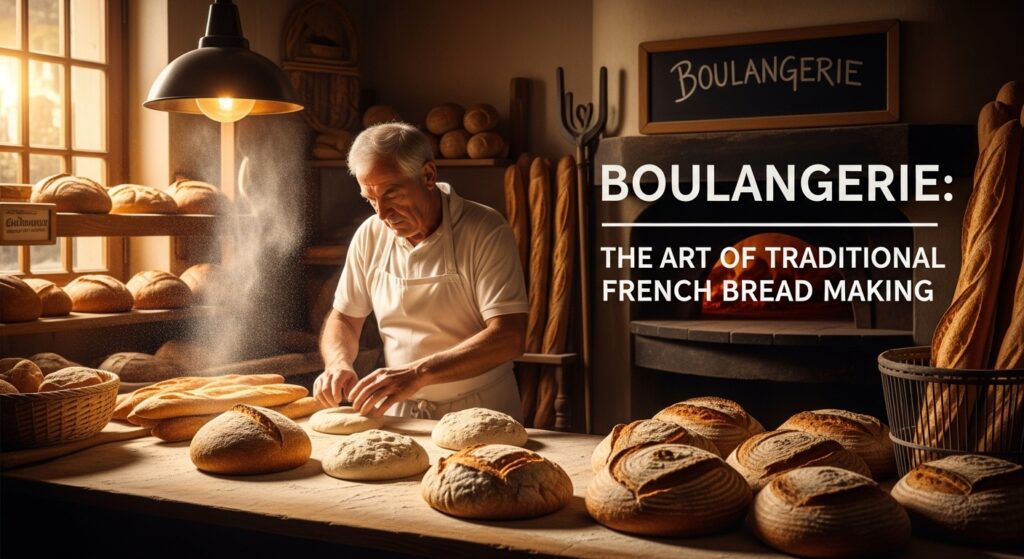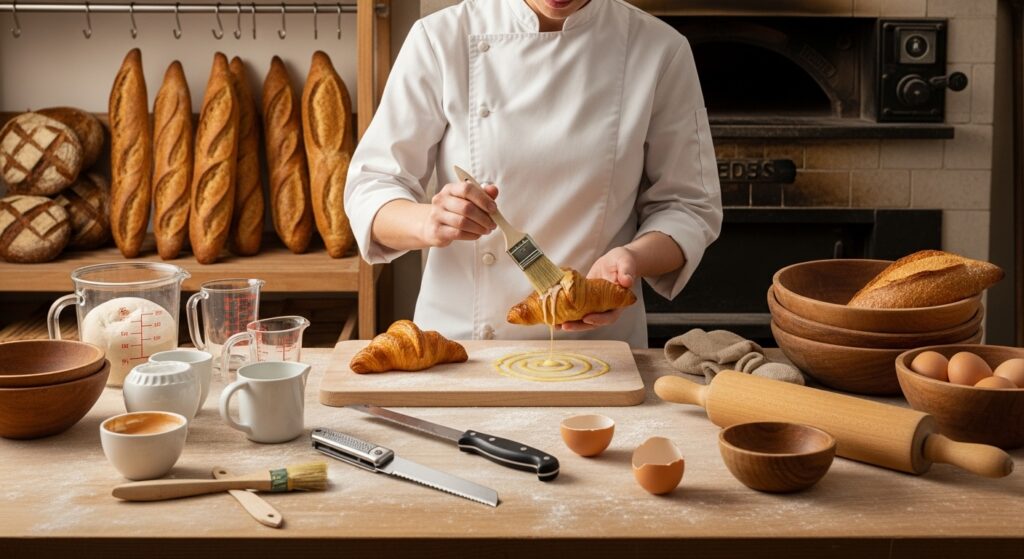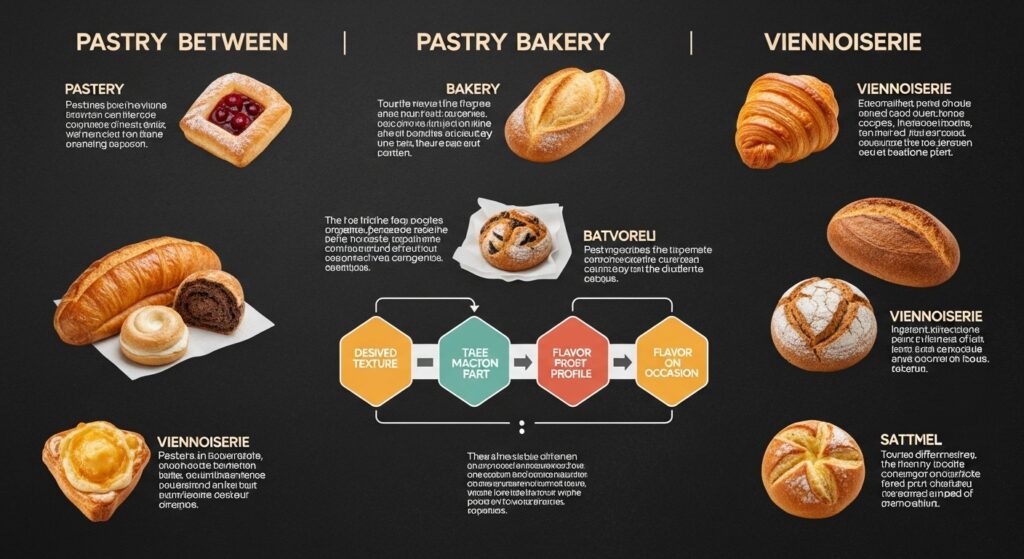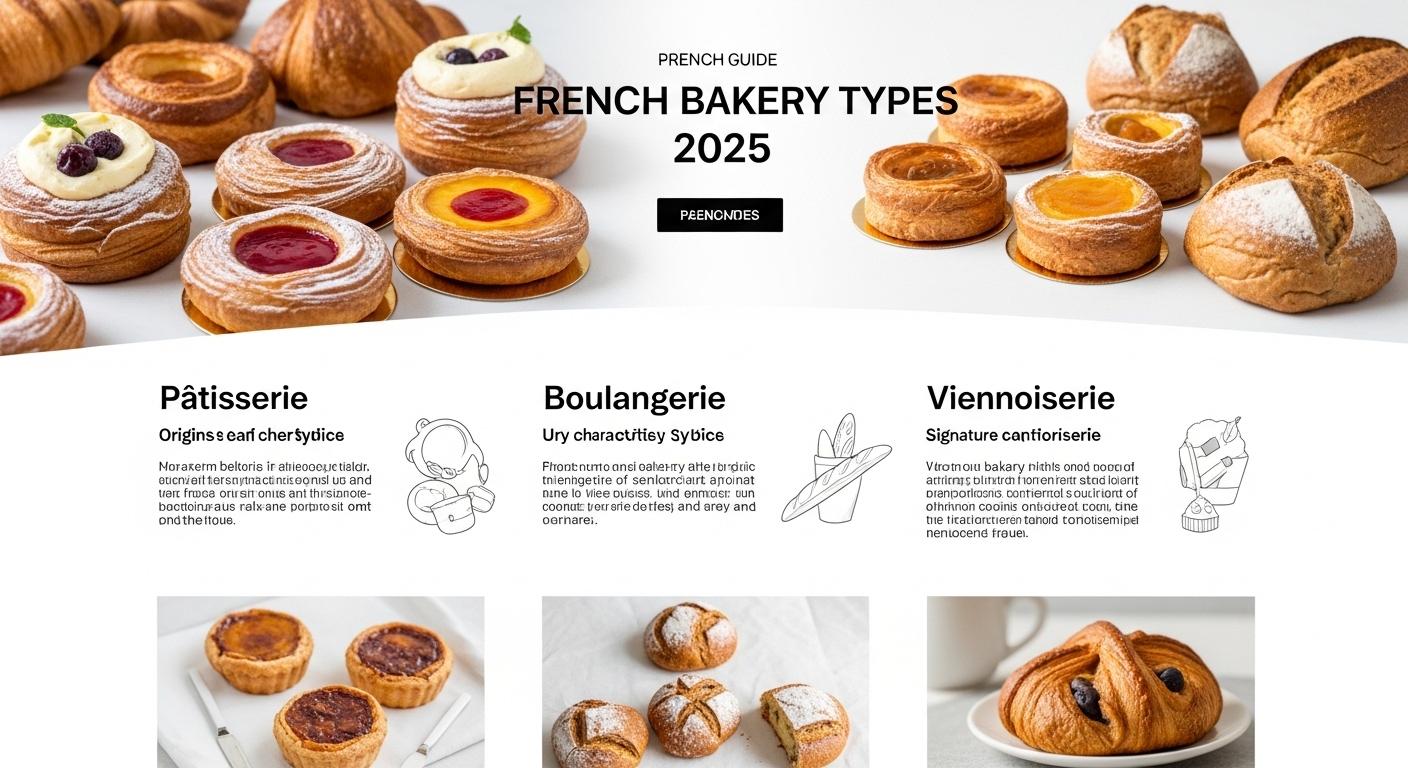Man, I was so confused when I first moved to Lyon! There were like three different bakery shops on my street, and I had no clue which one to go to. My landlord’s wife, Madame Dubois, saw me standing there looking lost and just started laughing.
“Oh mon dieu,” she said, “you don’t know the difference, do you?”That was embarrassing. But hey, she grabbed my arm and dragged me to each shop, explaining everything.
Now I can’t believe I lived without knowing this stuff. French people take their bakeries seriously, and once you get it, you’ll never look at bread and pastries the same way again.
What is Pâtisserie? Understanding French Pastry Art and Sweet Delicacies
So a pâtisserie is basically where dreams come true, but in cake form. I’m not even joking – these places smell like heaven, and everything looks like it belongs in a museum. The first time I walked into one, I literally stood there with my mouth open.
My buddy’s girlfriend works at this fancy pâtisserie near the cathedral. She told me she spent four hours on one wedding cake. FOUR HOURS! I was like, “Are you serious?” But then she showed me the process. Every single decoration is placed by hand. The cream is measured to the exact gram. It’s insane.
French pastry art isn’t messing around. These aren’t just desserts – they’re like edible sculptures. The sweet delicacies cost a fortune, but honestly, after seeing how they’re made, I get it. The attention to detail is crazy. They even check the weather before deciding what to make because humidity affects the chocolate.
Understanding pastry means realizing it’s part science, part art. The pastry chef explained that if the room is too hot, the butter melts differently. If it’s too cold, the chocolate won’t set right. Who knew baking was so complicated?
READ THIS BLOG : What Is Retrieval-Augmented Generation, aka RAG?
What is Boulangerie? The Art of Traditional French Bread Making
Okay, so my downstairs neighbor runs a boulangerie, and this guy is up at 4 AM every single day. Every. Single. Day. I hear him moving around down there while I’m still in bed, and honestly, I respect the hell out of him for it.
Traditional bread making is wild because it looks so simple but it’s actually super hard. This dude uses four ingredients – flour, water, salt, yeast. That’s it. But somehow his bread tastes amazing while the place down the street tastes like cardboard. When I asked him about it, he just shrugged and said, “Twenty-six years of practice.”

The art of bread making is all about timing and feel. I watched him work one morning, and he doesn’t even use a timer. He just knows when the dough is ready by touching it. That’s wild to me. I can barely make toast without burning it.
French breads are way more diverse than I thought. There’s not just baguettes – there’s pain de campagne, pain complet, brioche, and like ten other types I can’t even pronounce. Each one has its own technique and timing. The guy knows exactly when to take each type out of the oven just by looking at it.
What is Viennoiserie? Austrian-Style Breakfast Pastries Perfected by France
Saturday mornings are sacred in my neighborhood because that’s when the croissants come out fresh. I’m talking about proper croissants, not those sad things you get at chain stores. These Austrian-style pastries are the real deal.
The baker at my local viennoiserie showed me how he makes croissants, and I was blown away. He rolls butter into the dough over and over, creating all these layers. Like, 81 layers or something crazy like that. When it bakes, all those layers separate and create that flaky texture.
France took these breakfast pastries and made them their own. What started as simple Austrian style pastries became something way more sophisticated. The French are good at taking other people’s ideas and making them better, I guess.
A good croissant should basically explode in your mouth when you bite it. Steam should come out, and it should be buttery as hell. The inside should be soft and chewy. Most places mess this up, but when it’s done right, it’s incredible. France definitely perfected these pastries.
Key Differences Between Pâtisserie, Boulangerie, and Viennoiserie
After living here for a while, I finally figured out the key differences between these bakery types. It’s not just about what they sell – it’s about timing, price, and what you actually need.
Pâtisseries are for when you need to impress someone or celebrate something special. Birthday party? Pâtisserie. Dinner with your boss? Pâtisserie. Random Tuesday? Probably not pâtisserie unless you’re feeling fancy. The stuff is beautiful but expensive.
Boulangeries are for everyday life. I go there every morning for my baguette. It’s cheap, it’s fresh, and it’s what French people have been doing forever. The bread is usually best in the morning, so don’t show up at 5 PM expecting miracles.
Viennoiseries are perfect for weekend mornings or when you want something nicer than regular bread but don’t want to spend pâtisserie money. The croissants are amazing, but they’re best when they’re warm, so timing matters.
Essential Tools and Techniques Used in French Bakeries
I got curious about what goes on behind the scenes, so I asked my baker friends to show me their essential tools. The pâtisserie has all this fancy equipment that looks like it belongs in a lab. Digital scales, thermometers, specialized molds – it’s like NASA for cakes.
Pastry techniques require crazy precision. Everything is measured exactly, timed perfectly, and kept at specific temperatures. The pastry chef has like 50 different piping tips, and she knows exactly what each one does. It’s impressive and intimidating at the same time.

The boulangerie is way more old-school. My neighbor uses the same wooden tools his grandfather used. His bread paddle is worn smooth from decades of use. The scoring blade has been sharpened so many times it’s half the size it used to be. There’s something cool about that tradition.
Bakery tools in the viennoiserie combine both approaches. They need precision for the lamination process but also the intuitive skills for shaping. Their machine for rolling dough cost more than my car, but they still do the final shaping by hand.
Legal Requirements and Certifications for French Bakeries
Here’s something that blew my mind: France has actual laws about what these places can call themselves. Like, real government regulations. You can’t just open a shop and call it a boulangerie without meeting specific requirements.
Legal requirements are no joke here. My boulangerie neighbor explained that he has to bake everything fresh on-site every day. If he tried to sell frozen bread that he just heated up, he’d lose his license. The government actually checks this stuff.
Bakery certifications take years to get. The pastry chef I know studied for four years and had to pass both written and practical exams. She can make over 200 different pastries from memory. That certificate hanging in the window isn’t just decoration – it represents serious commitment.
These regulations protect what makes French bakery culture special. When you see those official names on shops, you know exactly what you’re getting. The bakery business operates under rules that keep standards high and traditions alive.
Popular French Pastries and Breads You Must Try
After two years of eating my way through Lyon (tough job, I know), I’ve figured out what popular pastries you absolutely can’t miss. The mille-feuille is like eating clouds made of butter and cream. Just don’t try to eat it neatly – it’s impossible.
French breads are way more interesting than just baguettes. The pain de campagne from my local boulangerie uses three different flours and ferments for almost a full day. It tastes like actual bread, not the fluffy stuff we call bread back home.
Must try items from viennoiseries include pain aux raisins, which most tourists skip. Big mistake. These spiral pastries are filled with pastry cream and raisins, and they’re basically perfect. The dough is buttery, the filling is creamy, and the raisins add just the right sweetness.
Popular French specialties change by region too. When I visited Brittany, I tried kouign-amann, which is basically butter and sugar wrapped in dough. Sounds simple, but it’s incredible. The outside caramelizes while the inside stays soft. It’s like eating happiness.
How to Choose Between Pâtisserie, Boulangerie, and Viennoiserie?
How to choose really depends on what you need and when you need it. For my friend’s birthday, I went to the pâtisserie and ordered a custom cake three days ahead. For my daily bread, I hit the boulangerie every morning around 7 AM.
Timing is everything. Boulangeries are best first thing in the morning when everything’s fresh from the oven. By afternoon, the bread is still okay but it doesn’t have that amazing warm crispness. Pâtisseries are consistent all day since their stuff doesn’t depend on being hot.

Budget matters too. Pâtisserie items cost serious money because they take hours of skilled work. A simple tart might take two hours to make properly. Boulangerie bread is incredibly cheap – a perfect baguette costs less than a coffee but gives you way more satisfaction.
My advice? Go to all three types and make friends with the people working there. They’ll remember what you like and might save special stuff for you. That personal connection is what makes French bakery culture so awesome.
READ THIS BLOG : Madison Huang: NVIDIA’s Senior Director Leading Physical AI and Robotics Innovation
French Bakery Traditions in Modern Culinary Arts
Bakery traditions keep changing while staying the same, if that makes sense. The pastry chef I know started making gluten-free versions of classic pastries. Same techniques, different ingredients. People with dietary restrictions can finally enjoy this stuff.
Modern culinary trends focus more on local ingredients now. My boulangerie neighbor works directly with farmers instead of big suppliers. He says it’s actually closer to how things used to be done before mass transportation changed everything.
Technology helps but doesn’t replace skill. Digital scales make measurements more precise. Controlled fermentation chambers keep conditions consistent. But the human touch is still what makes the difference between good and great.
French traditions adapt to modern life while keeping their core values. Young bakers still learn from masters who learned from their masters. That knowledge passes down through generations, keeping ancient techniques alive.
Starting Your Own French Bakery: Tips for Success
Starting your own bakery is way harder than it looks. My friend tried this last year and learned some expensive lessons about equipment costs, regulations, and customer expectations. It’s not just about knowing how to bake.
Tips for success include picking one specialty and doing it really well. Don’t try to be everything to everyone right away. Build a reputation for quality, then expand. My successful baker friends all started small and focused.
Bakery success depends a lot on location and understanding your customers. Morning foot traffic is crucial for boulangeries. Afternoon customers keep pâtisseries busy. Know your neighborhood’s patterns and plan accordingly.
Training never stops. Even experienced bakers keep learning. My neighbor attends workshops and studies with other professionals. Techniques evolve, customer tastes change, and new equipment becomes available. Stay curious and keep improving.
What’s the biggest mistake tourists make when visiting French bakeries?
Rushing and not understanding timing. Each bakery type has optimal visiting hours, and quality varies significantly throughout the day.
Can I learn these techniques without moving to France?
Absolutely, but you need good instruction and tons of practice. Many culinary schools offer French baking programs now.
Why do French bakeries close on Mondays?
Traditional rest day for bakers who work crazy early shifts six days a week. Though many modern places stay open seven days now.
Are these bakeries expensive compared to regular stores?
Pâtisseries are pricey, boulangeries are super affordable, and viennoiseries are somewhere in between. Quality justifies the cost difference.
What should I order if I’m trying French bakeries for the first time?
Start simple – fresh baguette from a boulangerie, butter croissant from viennoiserie, and a basic tart from a pâtisserie.
Conclusion
Understanding pâtisserie vs boulangerie vs viennoiserie completely changed how I experience food in France. Each bakery type offers something unique that reflects centuries of tradition and skill.
These French bakery traditions survive because they’re about more than just food. They represent craftsmanship, community, and quality standards that don’t compromise. Whether you want celebration cakes, daily bread, or perfect breakfast pastries, knowing these differences makes every bite better.

